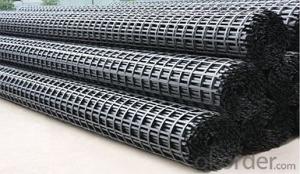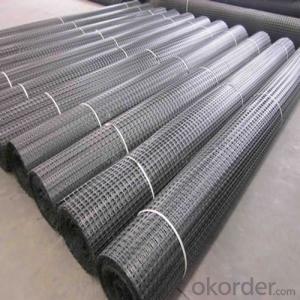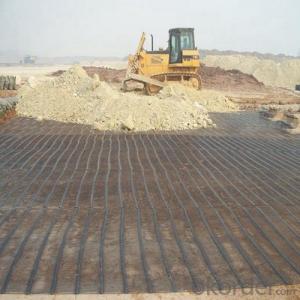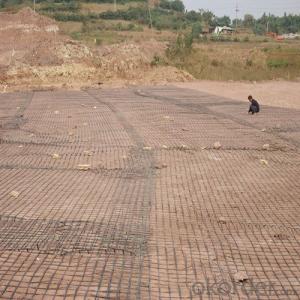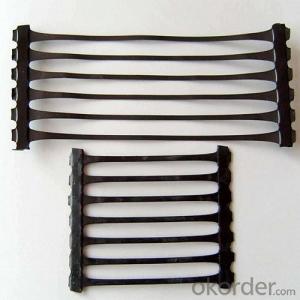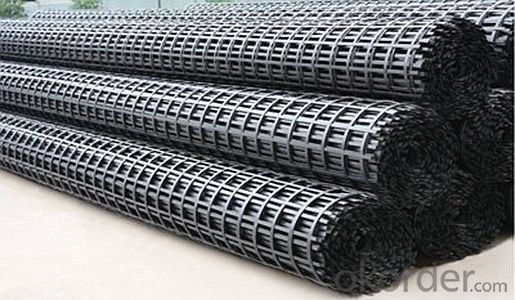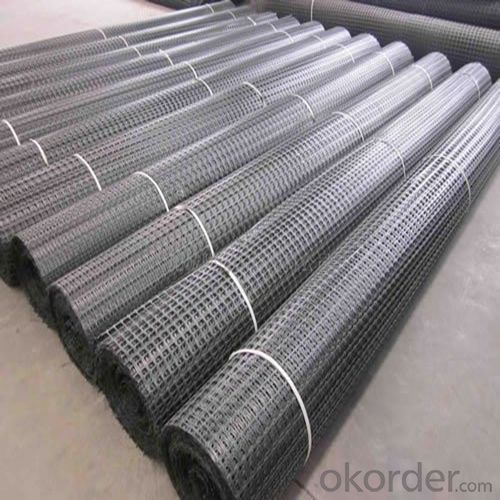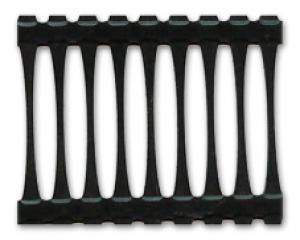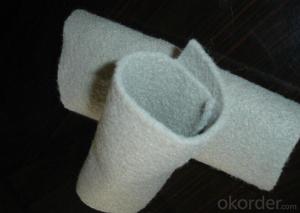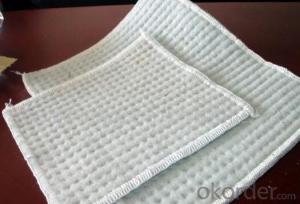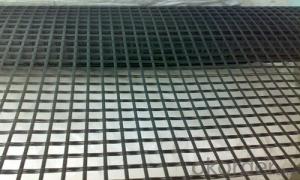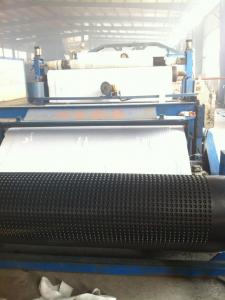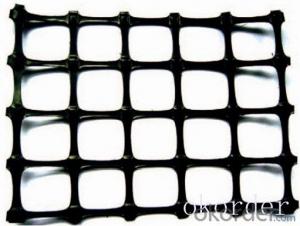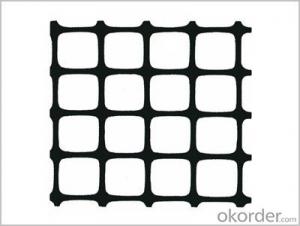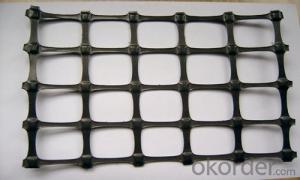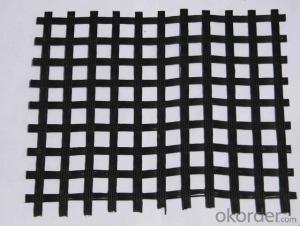Neoloy Geocells Polypropylene Geogrid for Civil Engineering Construction
- Loading Port:
- China main port
- Payment Terms:
- TT OR LC
- Min Order Qty:
- 1000 m²
- Supply Capability:
- 10000000 m²/month
OKorder Service Pledge
OKorder Financial Service
You Might Also Like
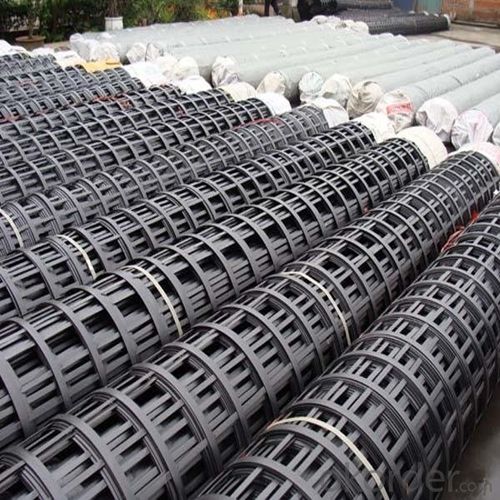
Introduction
Type:
Geogrids
Place of Origin:
Jiangsu, China (Mainland)
Brand Name:
Lonrace
Model Number:
geogrid
Material:
Polyester
Color:
White Black Gray Etc
feature:
Features:
1. High tensile strength in warp and across directions
2. Low Elongation
3. High flexibility
4. High and low temperature resistance
Slopes and subgrades with rails are a serious problem in railroad construction. Under high pressure the layers slide and deform consequently causing rail deformation, which requires closing railroad segments for a long time. Geogrid application allows carrying out comlex repair operations of the necessary road segment in shortest time (which is very essential in transportation)
Packaging & Shipping
Packing: PLASTIC FILM INSIDE, AND WOVEN BAG OUTSIDE
Shipping: About 15 days after receipt the deposit
geotextile fabric
permeability,filtration,easy for construction
ISO and CE certificate
Good quality and competitive price
Our Service
Quality assurance
1.On a regular basis or as per your request,we entrust national testing agencies to conduct quality inspections
2. Strictly in accordance with the ISO9001-2008 international quality system standard,we monitor and manage the whole process throughout production,quality testing,and measurement to ensure product quality
3. For quality-related construction delay or substandard construction(except for damage or losses due to customer’s responsibility or irresistible natural disasters),we have refunding,replacement,and repair services.We will respond to customers’ feedbacks on quality issues within 24 hours.
After-sales service
1.In order to provide customers with comprehensive technical support,we will provide technical and other related information upon request in a timely manner.
2.In required,we will appoint specialized technicians to the construction site to give technical trainings to construction people,and offer technical guidance throughout the whole construction process.
3.For damage due to shipment and delivery,after we receive the complaint,we will check the issure through provided pictures and videos.If our responsibility is confirmed,we wil offer free replacement.
4.When the construction is completed,as your request,our technical staff may participate in the final acceptance.
FAQ:
Q: What kind of payments does jenor support?
A: T/T, L/C, Cash are accepted.
Q: Do you charge for the samples?
A: Accordeing to our company policy, the samples are free, we only charge the freight fee. And we will return the freight fee during the next order.
Q: Can you produce according to customers' design?
A: Sure, we are professional manufacturer, OEM and ODM are both welcome.
Q: Do you have other products?
A: Yes, please check the pictures:
- Q: Geogrid tgsg45-45 what does it mean
- Refers to the two-way plastic geogrid, is a two-way stretch square mesh geogrid, 45-45 tensile strength, that is, tension
- Q: I would like to ask the Lebanon warp knitting machine, the model is: Cop - HS_2ST geogrid do know how to process
- This model is the industrial warp knitting machine, axial weft, used in roads, rivers, buildings, agriculture, etc..
- Q: Can geogrids be used in subgrade improvement?
- Yes, geogrids can be used in subgrade improvement. Geogrids are often used in civil engineering projects to reinforce and stabilize weak soils in the subgrade. They can help to distribute loads more evenly, increase bearing capacity, and reduce settlement. Additionally, geogrids can improve the overall performance and longevity of the subgrade, making them a valuable tool in subgrade improvement projects.
- Q: Can geogrids be used in mining operations?
- Yes, geogrids can be used in mining operations. Geogrids are commonly used in mining for various purposes such as soil stabilization, reinforcement of embankments, and slope stabilization. They provide strength and stability to the mining site, preventing soil erosion and enhancing safety during mining operations.
- Q: Peel force mainly in the size of raw materials
- The tensile strength of the welded joints!
- Q: What are the factors affecting the design of geogrid-reinforced structures?
- The factors affecting the design of geogrid-reinforced structures include soil type and properties, slope stability, loading conditions, environmental factors, and the desired structural performance.
- Q: Geogrid is divided into several?
- Glass fiber grid warp knitted grid one-way geogrid two-way grid steel grating
- Q: Can geogrids be used in shoreline erosion control?
- Yes, geogrids can be used in shoreline erosion control. Geogrids are commonly used in coastal engineering projects to stabilize the soil and prevent erosion by reinforcing the shoreline. They are effective in providing structural support and preventing the loss of sediment, thereby reducing erosion and protecting the coastline.
- Q: Are there any environmental concerns associated with geogrids?
- Yes, there are some environmental concerns associated with geogrids. One concern is that geogrids are often made from non-biodegradable materials such as plastics, which can contribute to pollution and waste accumulation. Additionally, the manufacturing process of geogrids may require the use of fossil fuels and other resources, which can have a negative impact on the environment. However, when used correctly and in appropriate applications, geogrids can also help mitigate certain environmental concerns such as soil erosion and habitat destruction.
- Q: The dam is protection of geomembrane or gabion.
- The protective effect is good, and the soil erosion is prevented
Send your message to us
Neoloy Geocells Polypropylene Geogrid for Civil Engineering Construction
- Loading Port:
- China main port
- Payment Terms:
- TT OR LC
- Min Order Qty:
- 1000 m²
- Supply Capability:
- 10000000 m²/month
OKorder Service Pledge
OKorder Financial Service
Similar products
Hot products
Hot Searches
Related keywords
